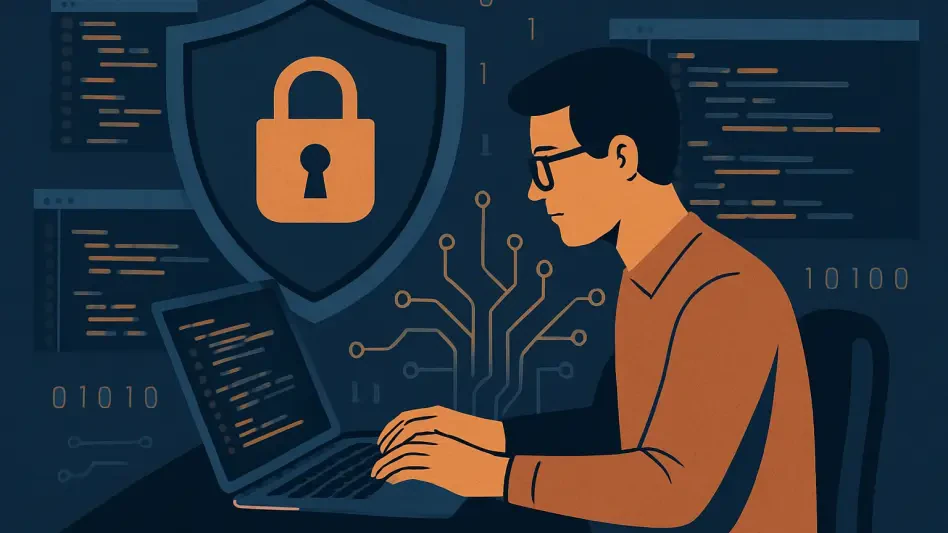As the cybersecurity landscape grows increasingly complex, the human element remains a significant vulnerability, responsible for an estimated 90% of breaches. Small and midsize businesses (SMBs), in particular, struggle with the resources to tackle this persistent issue effectively. Recognizing this challenge, Coro launched its innovative Security Awareness Training (SAT) module. This solution harnesses artificial intelligence to mitigate human error and enhance security postures through personalized, adaptive training.
The Technological Edge of AI-Enhanced Security Training
AI-enhanced security training represents a transformative approach within cybersecurity, offering significant strides in addressing both common and sophisticated attack vectors. At the core of this technology is the integration of AI principles that deliver personalized educational experiences for employees. The SAT module adapts dynamically based on an individual’s interaction patterns, focusing on weak areas that may expose organizations to threats. This technological leap is not just a supplementary tool but a fundamental shift in how security training is perceived and delivered.
Personalized adaptive learning stands as a hallmark feature of this training solution. AI algorithms identify unique employee vulnerabilities, tailoring the educational content to fortify these gaps. This customization enhances engagement, ensuring employees remain attentive and receptive. By actively involving individuals in learning tailored to their specific needs, organizations witness significant improvements in knowledge retention and comprehension, key elements in reducing human-error vulnerabilities.
Complementing this is the innovative AI-enhanced phishing simulation feature. These simulations are designed to mimic realistic cyber threats, providing employees with the experience needed to recognize and evade phishing attacks effectively. As a result, user awareness notably increases, and vulnerability to such attacks diminishes. Through these simulated scenarios, employees engage in proactive learning, resulting in reduced risk from phishing attempts.
Advancements in AI-Enhanced Security Training
AI-enhanced security training has undergone rapid evolution, reflecting both innovation and adaptation to changing industry demands. Current trends show an integration of sophisticated data analytics and predictive modeling, enhancing the effectiveness of training modules further. Companies are increasingly investing in AI-driven training solutions, recognizing their potential to simplify and unify otherwise complex cybersecurity processes.
Noteworthy developments are evident in how institutions streamline content delivery and customize it in real-time. As the technology progresses, industry behaviors shift, leading to comprehensive adoption and integration of AI-enhanced solutions within broader security strategies. This ongoing evolution highlights an industry eager to embrace AI-driven processes to remain one step ahead of cyber threats.
Applications and Practical Use Cases
AI-enhanced security training has found practical applications across various industries, illustrating its versatility and efficacy. Financial services, healthcare, and retail sectors, in particular, have adopted this technology robustly, leveraging its capabilities to address intricate security challenges. Each of these sectors has unique vulnerabilities that AI-enhanced training astutely addresses.
Healthcare institutions, for instance, deploy AI-enhanced training to safeguard sensitive patient data, ensuring compliance with stringent regulations. In retail, the creation of realistic scenarios helps prevent the exploitation of financial transactions and customer data. These sector-specific implementations demonstrate the adaptable nature of AI-enhanced security training, proving its value across diverse corporate landscapes.
Challenges and Barriers in Implementation
Despite its promising capabilities, AI-enhanced security training faces obstacles that developers must navigate. Technical challenges include maintaining the accuracy and relevance of AI algorithms while ensuring scalability for diverse business environments. Additionally, there are regulatory concerns revolving around data privacy, particularly when using AI-driven analytics to profile employees.
Efforts to address these challenges are ongoing, with industry leaders collaborating to refine frameworks that balance technological innovation and regulatory compliance. This iterative process requires continuous adaptation and foresight to ensure the sustainable growth of AI-enhanced security solutions.
Looking Ahead
As technology continues to unroll its unprecedented advancements, the future of AI-enhanced security training projects a promising landscape of potential breakthroughs. Anticipated developments may include more intuitive AI systems capable of anticipating threats and preemptively restructuring training modules accordingly. Organizations looking to stay ahead of cyber adversaries will likely embrace these forthcoming capabilities.
As AI-driven training solutions mature, they are poised to redefine cybersecurity strategies, moving from reactive to proactive. Innovations will likely bring interdisciplinary collaboration, paving the way for technology that not only reacts to threats but anticipates them.
Summary and Insight
In evaluating AI-enhanced security training, it is evident that this technology has carved a niche within the cybersecurity domain, offering tailored solutions for complex issues. The personalized adaptive learning and realistic phishing simulations of Coro’s SAT module exemplify its unique impact. Despite its challenges, AI-driven training is poised to shape the future of cybersecurity defense strategies. Looking forward, organizations will be empowered to harness AI’s full potential in securing resilient, adaptive security infrastructures.








